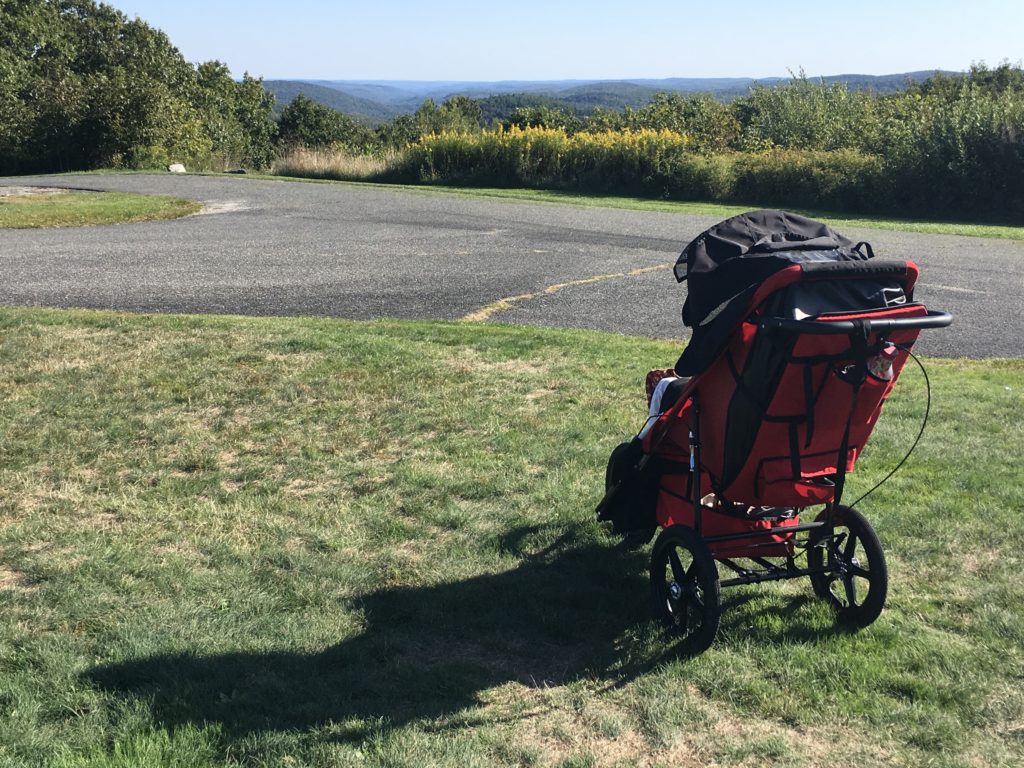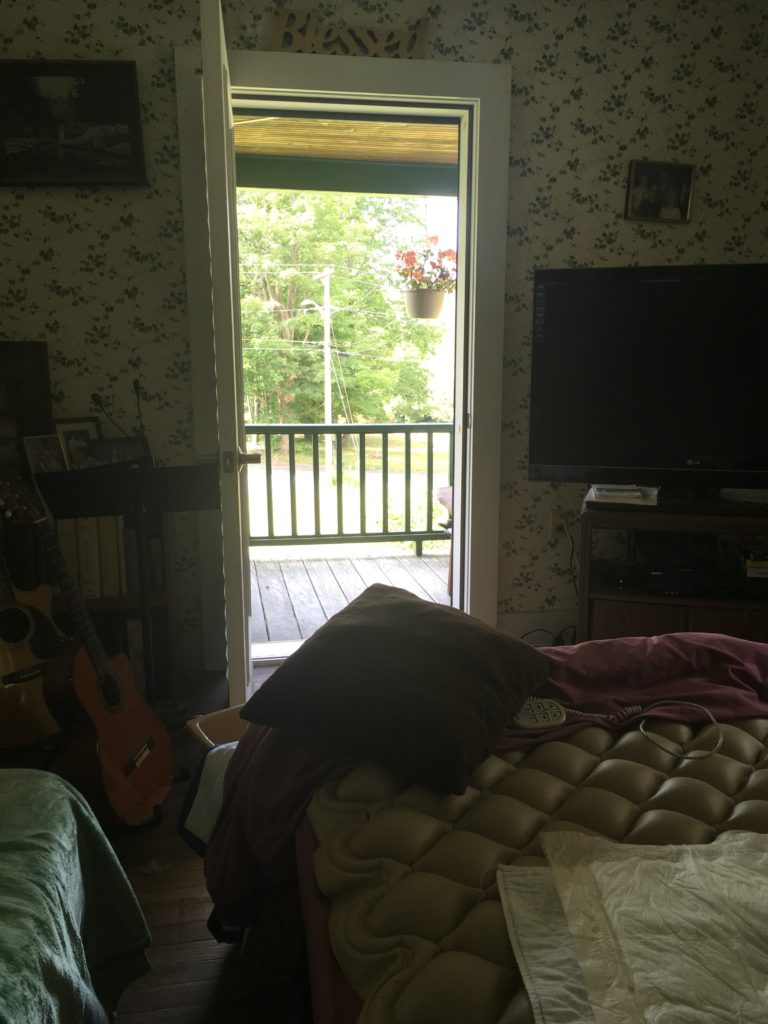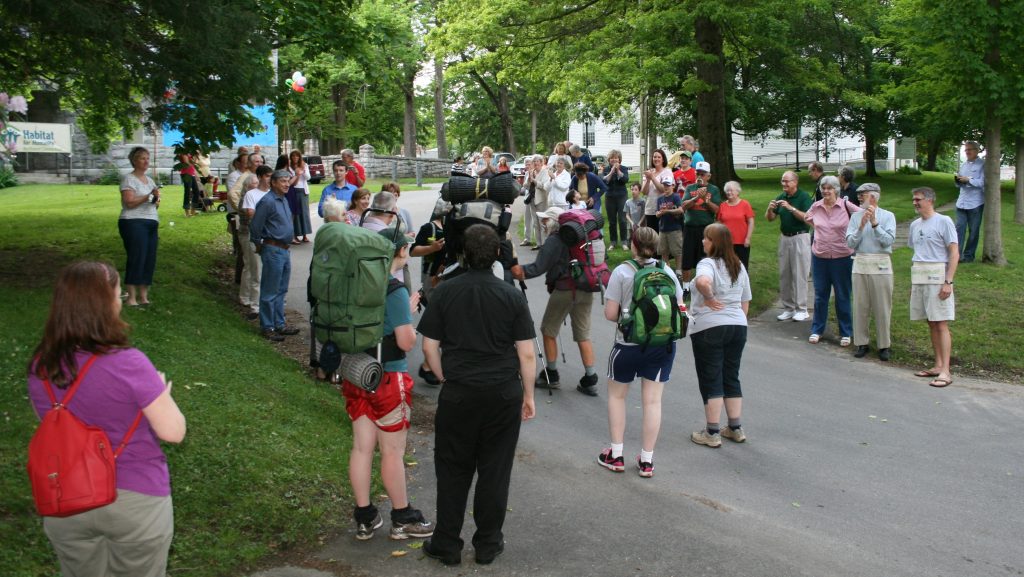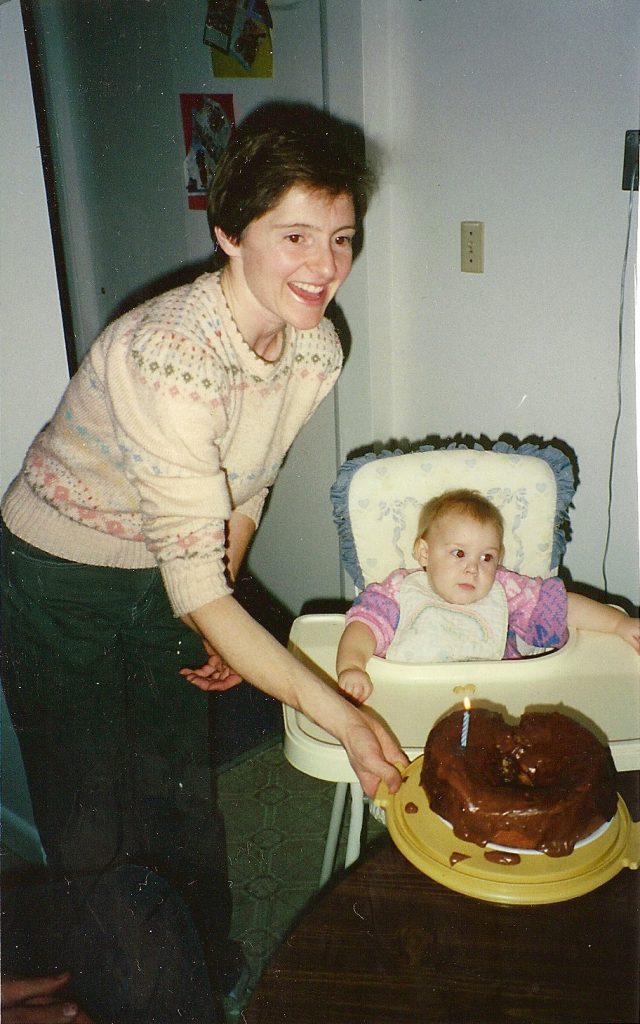4:12 am – I am awake. Whether Cindy woke me or not I seldom know for sure, but I do know she appears agitated, which sometimes occurs around this time of night. Her hospital bed does not align seamlessly with my regular bed but I am able to reach over and hold one of her hands. Her fist is clenched at first but over time relaxes and her fingers slip into mine. We continue holding hands even as one or both of us slip back into sleep. I awake again, find Cindy to be sleeping peacefully and withdraw my hand to assume a more comfortable sleeping position.
7:00 am – My alarm goes off. I quickly do the birthday rounds on Facebook, then carry my overnight urine bottle upstairs to dump the contents in the commode and add some more. I come back downstairs to feed the cats in the kitchen to stop their complaining.
I return to our “bedroom” and adjust the room from the “night arrangement” to the “day arrangement,” first pushing my bed back against the wall to allow maneuvering room on both sides of the hospital bed. Today I have Segovia playing on Amazon music. Sometimes I will pick an artist, sometimes a composer like Beethoven, but always a genre of soothing instrumentals for Cindy’s waking.
I turn my attention towards Cindy and tell her “I need a hug.“ Not “I want to give you a hug” mind you. I do what I can to make her feel like she is giving rather than receiving, even though she is fully incapacitated now. Usually she flashes a hint of a smile when I do this, but this morning something feels different. I see the hint of a tear and I sense she is experiencing regret, not for her situation as a whole, but regretting that she is incapable of controlling her arms to hug me. I proceed to change her as usual, then cheerfully suggest to her I ought to make us some breakfast.
7:36 am – Monday mornings I cook eggs to go along with toast, tea and a banana. If we have desserts in the house this is when I serve them. Today we still have some chocolate chip cookies our daughter baked for us.
8:03 am – I place the serving tray on the swivel table we use for our meals and sit in the chair next to Cindy’s bed. I put on the show that we watch for breakfast, which currently happens to be “Psych.” This is the perfect breakfast show for us, lighthearted and zany with a touch of romance. I put the towel I use for a bib in place and go through our eating routine: one bite for Cindy, one bite for me, one sip for Cindy, one sip for me, until we finish everything on the tray. I mean everything. I take delight in how much everyone is surprised by Cindy’s continuing appetite.
8:47 am – I help Cindy with her range of motion exercises: 110 repetitions of various stretches for her arms and legs. After the exercises I change her again, this time putting on her pants and “dancing sandals.” Fortunately, this morning we still have time for a dance before someone from town visits to keep Cindy company. I play the Temptations on Amazon Music and hold Cindy in my arms as we sway back and forth. I tell her things like “this feels really nice,” and “you belong in my arms.” Her face is buried in my chest but I still can see a hint of a contented smile.
9:16 am – The friend who is visiting Cindy arrives. This happens every weekday morning around this time. For the next two hours I wash dishes, tackle some household chores, then prep for lunch. About midway through the visit I hear: “There’s that smile! You’ve made my day!”
Every regular visitor has that same goal, to see a smile from Cindy before they leave. Usually, but not always now, she delivers. Her smile brightened days when she was healthy as well. I often joke about how I could charge admission for Cindy’s smile, at least for the folks in town.
11:17 am – After our guest leaves I figuratively cross my fingers as I go to change Cindy. This is often the time of day that Cindy has a bowel movement, but I must change her in time to have lunch before the home health aide comes (when I am lucky, her BM comes during the home health aide visit). Fortunately, I am able to change her quickly. We start watching a movie from our videotaped collection while we eat our lunch, consisting mainly of fruits and vegetables.
11:59 am – The home health aide arrives. She comes on Mondays, Wednesdays and Fridays. Our routine for the rest of the day will be different now from Tuesdays and Thursdays, when no aide comes, and from the weekend, when no visitors come in the morning.
The aide’s most important function is to sponge bathe Cindy, since we no longer are upstairs where we can shower together. This was the biggest reason for placing Cindy in hospice care, as part of the package for moving downstairs where I can get her outside more. An added bonus has been the braiding of Cindy’s hair after a shampoo. While the home health aide cares for Cindy I work in the kitchen, cooking up a big batch of chicken, broccoli and rice that will be our suppers until Friday.
1:27 pm – I return to our downstairs “bedroom” and sign our aide’s timesheet. She is both very warm and professional at her job and we hope she continues on with us. People from agencies generally are not as reliable as visitors from town, but the hospice program has proven different. I place my computer on top of the swivel table again and switch the TV input to the computer. I practice movements of the American Discovery Symphony, set to slides of our journey, like I have done thousands of times before. While I practice Cindy gets to view, perhaps relive, the most amazing of all our journeys together.
2:28 pm – After the third movement I check and find out Cindy needs to be changed. Practicing the symphony was also a means of stalling, to make sure Cindy is freshly changed before we go out in the adult stroller. I again put on her dancing sandals and we have another “dance” after changing. This time she buries and rubs her face in my chest. I do not know if this is an act of comfort or if her nose just itches.
2:43 pm – I finish strapping Cindy into the stroller and we are ready for the seven mile jog we typically do on the days when the home health aide comes. On Tuesdays and Thursdays we often do a ten mile route, the weekend whatever I feel like. Every outing is weather permitting; today is dry with temperatures in the seventies.
The stroller has an awning for the sun, but with a window I can see through. Cindy’s eyes remain open for the whole time we are out. Already the time seems long ago when I took Cindy out in the pedicab; people would smile and wave at Cindy and she would smile back. I do not see her smile during our jog but she mumbles occasionally, which I interpret as enjoyment with being outside.
4:19 pm – We arrive back home, easily negotiating the driveway and the ramp I built for the porch. My ineptitude as a carpenter is legendary, but I can build things that are functional. I carry her from the stroller to her bed through the porch door installed just for this purpose. I put on an episode of the Great British Baking show while I unwind from the jog, take a shower and get supper ready.
The last time I showered with Cindy was many months ago, which now seems like many years despite it being a chore. Meanwhile, taking a shower by myself has become one of my few simple pleasures. Of course, there was a time when taking a shower with Cindy also would be pleasurable, but the last time that happened was about a decade ago.
5:15 pm – We eat supper while watching more of the movie we started at lunch. In addition to some of the chicken, broccoli and rice I prepared earlier we also have our usual supper fare of Greek yogurt with chia seeds and apple cider with apple cider vinegar added. Though eating food is not a problem for Cindy, I struggle at getting liquid in her without it dribbling out of her mouth.
6:02 pm – I change Cindy and go through the range of motion exercises again.
6:22 pm – I put on a family slideshow and place my computer on the swivel table one more time to work on my symphony composition. I currently work on the second movement, the one about culture, the one orchestrated with percussion. My progress on this gives me my greatest satisfaction these days. If someone told my younger self I would compose a symphony someday I would be incredulous. Who has the patience for that?! My situation breeds patience. Silver linings.
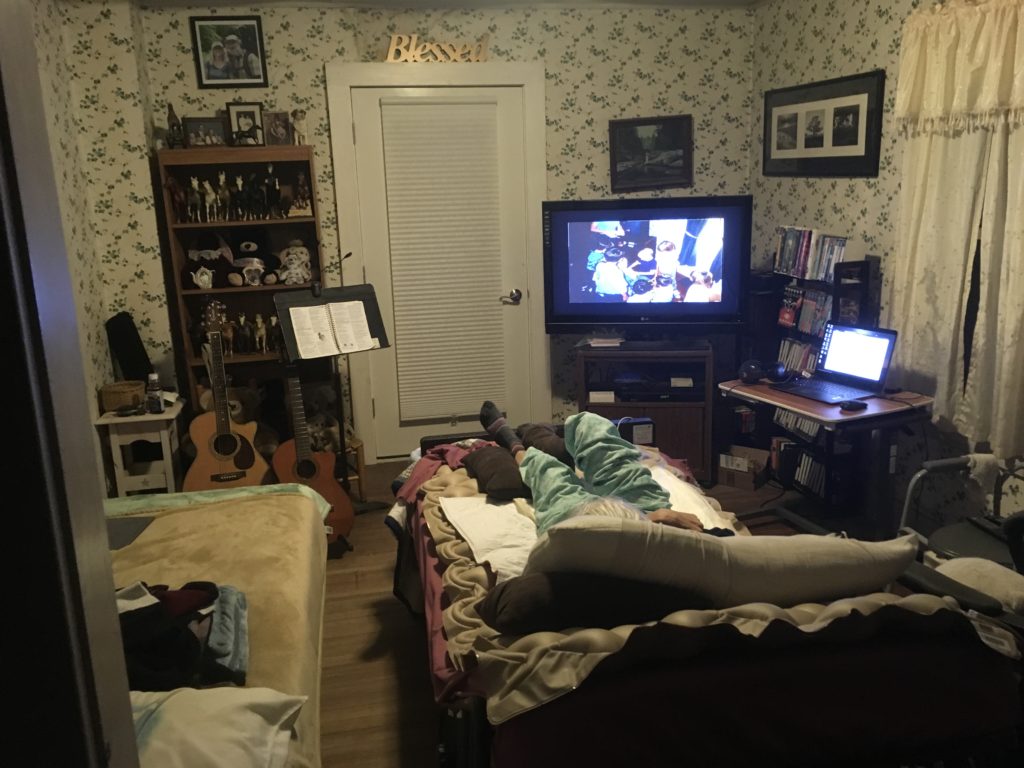
7: 29 pm – I start to play the video game “World of Warcraft” (WoW) or, as I like to tell my family, I embark on saving the world. The appeal of the game is less about the quests and more about the exploration of new lands. I am a little embarrassed to admit I am a “gamer,” but this is how I address the explorers itch I otherwise satisfy through long distance hiking. The interactive video game also seems to command Cindy’s attention, keeping her awake better than the Netflix fare.
9:03 pm – I brush Cindy’s teeth, give her melatonin and do range of motion exercises one last time. I do these chores now instead of right before bedtime as a means of keeping her awake just a little while longer. I keep her awake during the day as much as possible so that she will sleep at night as much as possible. Sleep management is one of many distinct advantages of caring for Cindy in her own home.
9:19 pm – We watch a few episodes of a sitcom to wind down the evening for Cindy. She falls asleep while we do this, which is OK now. I should watch only two episodes before moving on to the final evening chores, but I am prone to vegging out at this point in our routine. I just can’t seem to leave the chair while a third episode airs. Still, I figure I do pretty well at avoiding the ennui that might overcome many caregivers.
10:43 pm – I put the room back to its night arrangement then wash the dishes. I practice guitar to strengthen my muscle memory for some riffs, also calming the minds of both Cindy and myself.
11:23 pm – I read the cartoon book Dilbert under soft light until I start feeling sleepy. Cartoon books are the best sleep aid for me. Each lighthearted “chapter” is but a few panels, thus not engaging my attention for long. I give Cindy a kiss on the forehead, tell her ‘I love her,” and turn out the light to close another routine day.

